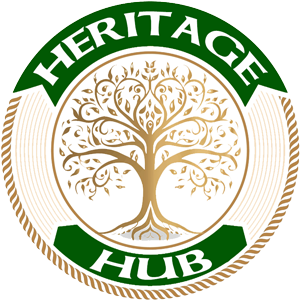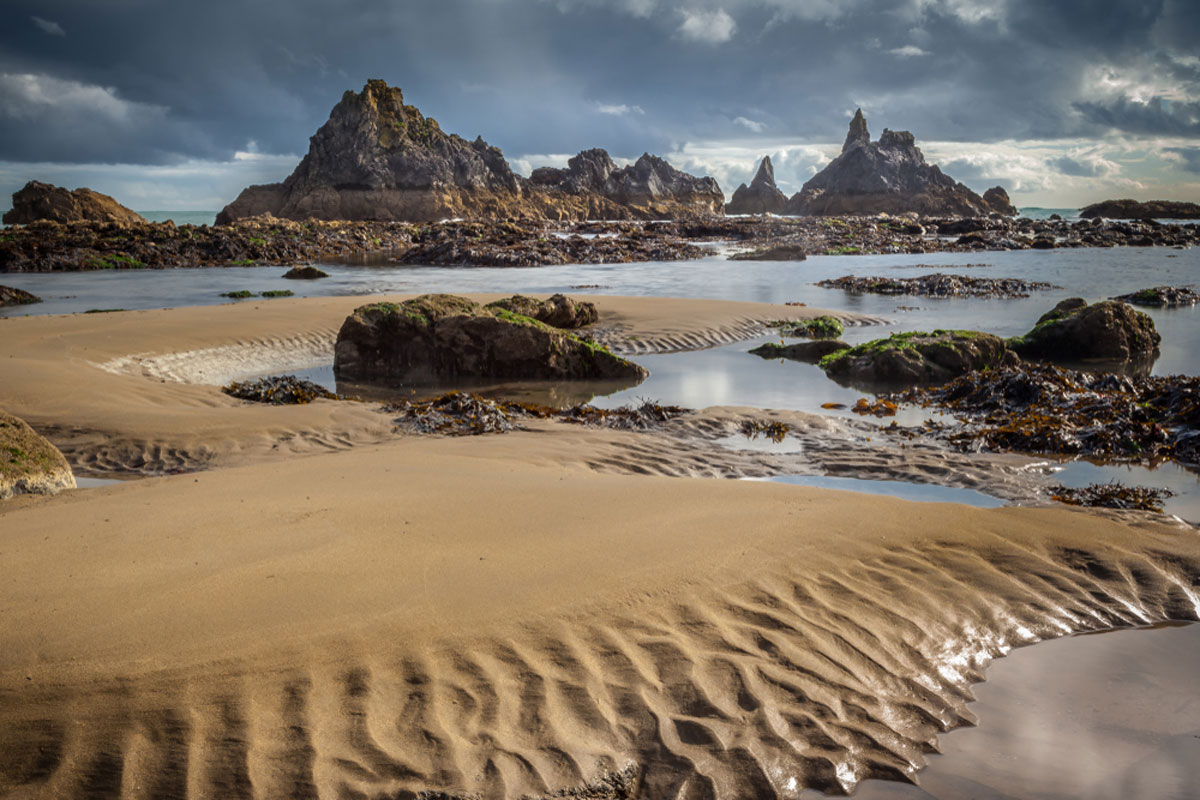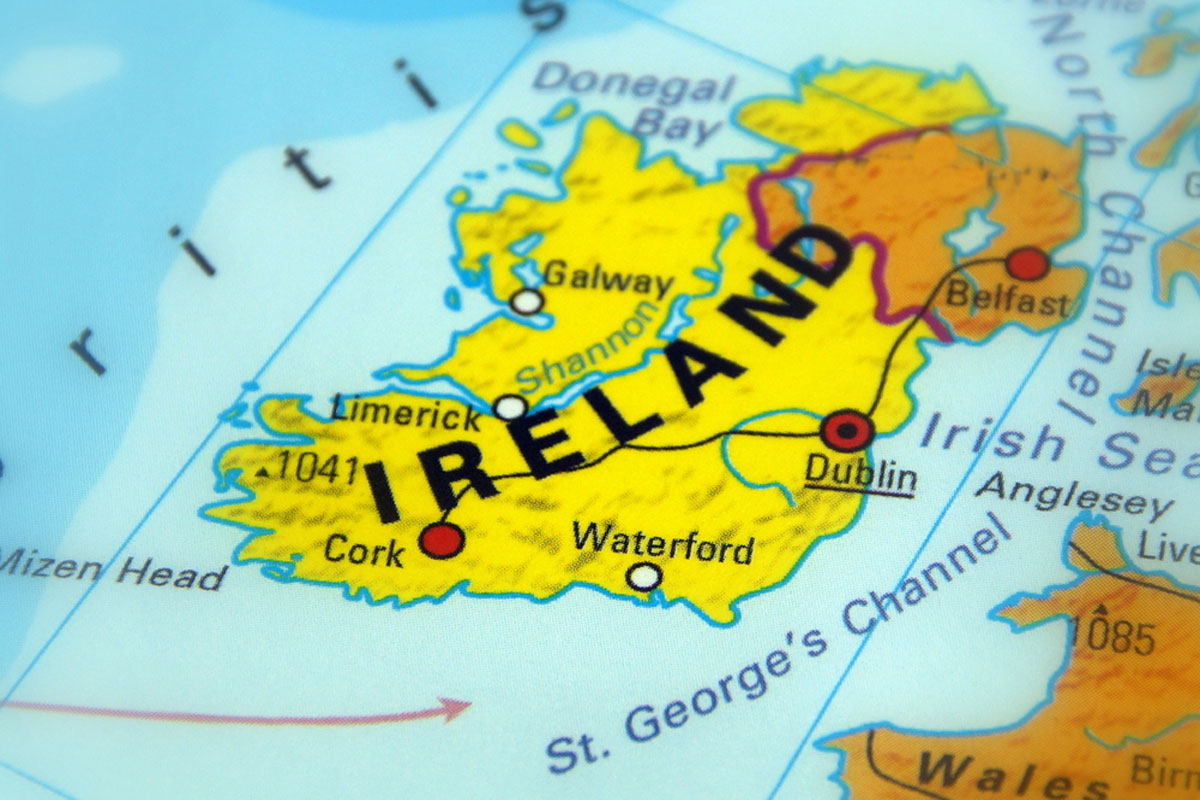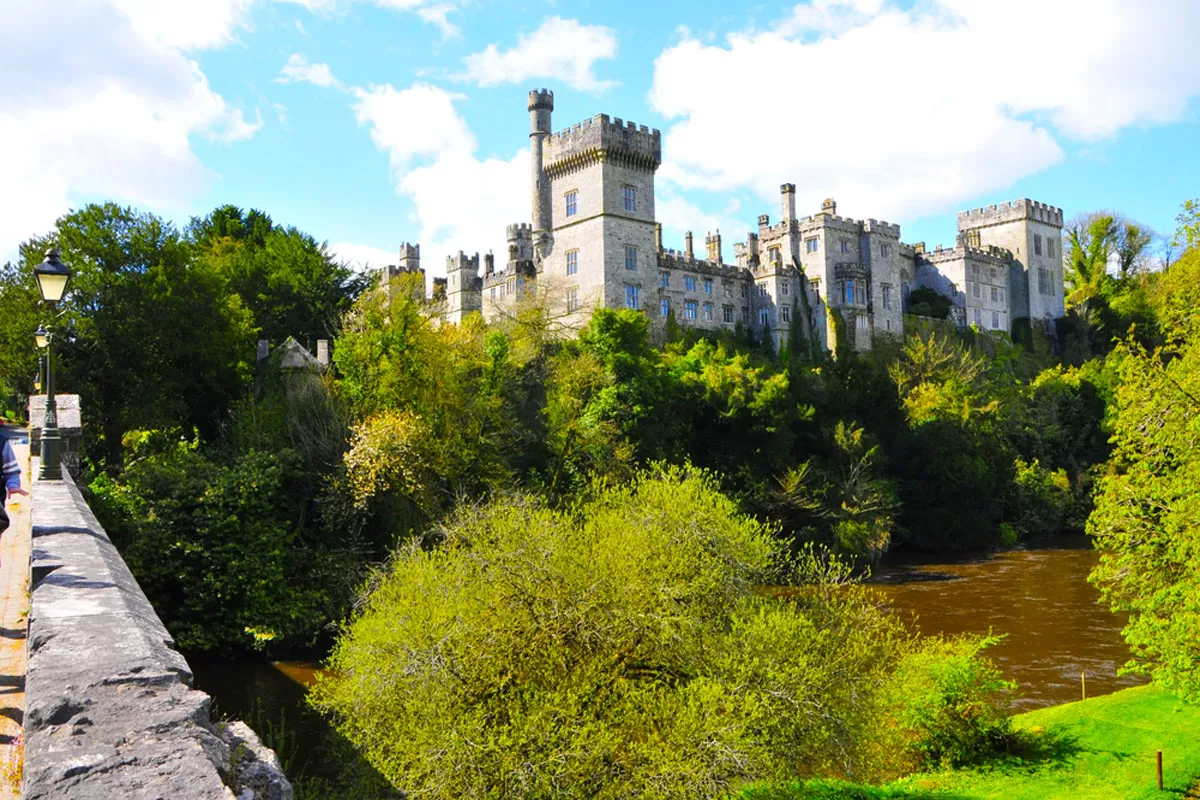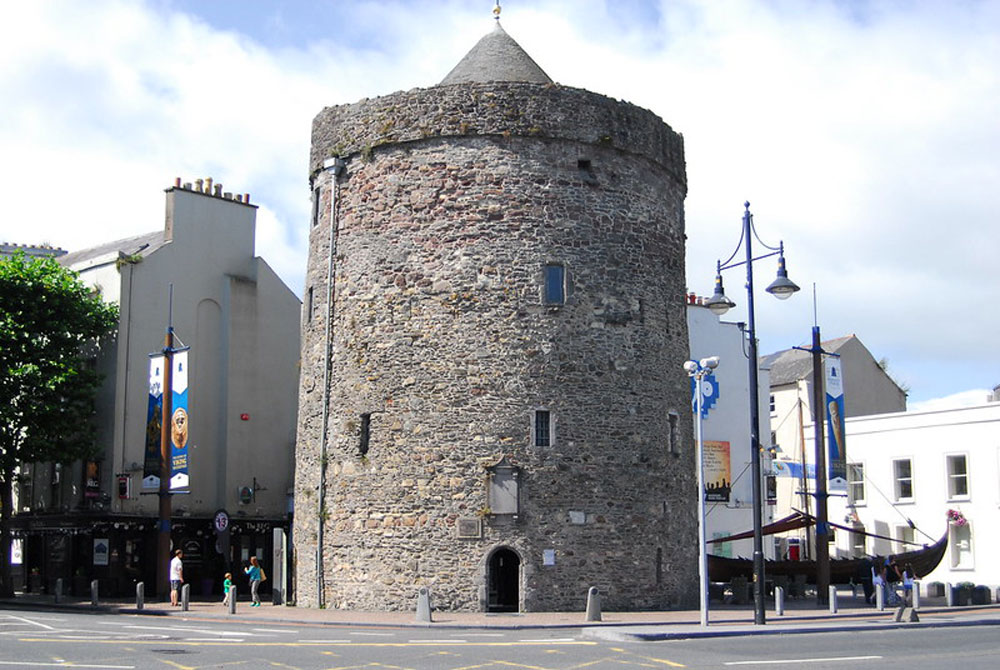An Introduction to the Copper Coast Geopark
The Copper Coast, located in County Waterford, is one of Ireland’s most captivating natural wonders. Designated as a UNESCO Global Geopark in 2004, this stretch of coastline is not only stunningly beautiful but also rich in geological and cultural history. Named for its 19th-century copper mines, the Copper Coast offers visitors a unique blend of rugged landscapes, fascinating geological features, and a deep connection to Ireland’s industrial past.
A Geological Treasure Trove
The Copper Coast Geopark spans approximately 25 kilometers of coastline, stretching from the seaside village of Stradbally to the charming town of Tramore. This area is renowned for its diverse geology, with rock formations that tell a story dating back over 460 million years. The landscape is a testament to the powerful forces of nature, shaped by ancient volcanic activity, the movement of tectonic plates, and the erosive power of the Atlantic Ocean. Visitors to the Geopark can witness dramatic sea cliffs, hidden coves, and ancient rock formations that offer a glimpse into the Earth’s distant past.
A Journey Through Time
One of the most remarkable aspects of the Copper Coast is its ability to transport visitors through time. The rocks along this coastline are a geological record of different periods in Earth’s history, from the Ordovician period, when the area was submerged under a warm, shallow sea, to the Devonian period, which saw the rise of the first forests. The Copper Coast’s geology provides a window into these ancient environments, with fossils and rock formations that reveal the changes that have occurred over hundreds of millions of years.
The Human Connection
While the Copper Coast is celebrated for its geological significance, it is also deeply intertwined with human history. The region was once a hub of industrial activity, particularly during the 19th century when copper mining was a major industry. The remnants of this era can still be seen today, with old mine shafts, engine houses, and other mining structures scattered along the coast. These sites offer a glimpse into the lives of the miners who once toiled here, extracting copper ore from the earth and contributing to Ireland’s industrial heritage.
A UNESCO Global Geopark
The designation of the Copper Coast as a UNESCO Global Geopark highlights its importance not only as a site of natural beauty but also as a place of scientific and cultural significance. The Geopark is part of a global network of UNESCO sites that promote the protection and sustainable use of geological heritage. It serves as an outdoor laboratory for geologists and researchers, as well as a destination for tourists and nature lovers who wish to explore its unique landscapes and learn about the Earth’s history.
Exploring the Copper Coast
For visitors, the Copper Coast offers a wealth of opportunities to explore and connect with nature. Walking trails, guided tours, and interpretive centers provide insights into the region’s geology, ecology, and cultural history. The area is also home to a variety of wildlife, including seabirds, dolphins, and seals, making it a haven for wildlife enthusiasts. Whether you’re interested in geology, history, or simply enjoying the stunning scenery, the Copper Coast is a destination that promises a rich and rewarding experience.
Geological Wonders of the Copper Coast
The Copper Coast Geopark is not just a place of stunning natural beauty; it is also a geologist’s dream, offering a rich tapestry of rock formations, fossils, and geological features that span hundreds of millions of years. This stretch of coastline is a living textbook, where the history of the Earth is etched into the cliffs, beaches, and sea stacks, inviting visitors to explore and discover the secrets of our planet’s distant past.
A Landscape Shaped by Volcanic Activity
One of the most striking aspects of the Copper Coast is its volcanic history. The rocks found along this coastline tell the story of ancient volcanic eruptions that took place over 460 million years ago during the Ordovician period. These volcanic events were responsible for creating the foundation of the Copper Coast’s unique geology. Basalt and andesite rocks, formed from solidified lava, are common in the area, particularly around the village of Bunmahon. These rocks are a testament to the explosive volcanic activity that once shaped this landscape, creating the dramatic cliffs and rocky outcrops that define the coast today.
Sedimentary Layers and Ancient Seas
In addition to its volcanic origins, the Copper Coast is also renowned for its sedimentary rock formations, which provide a glimpse into the area’s past as a shallow sea. During the Devonian period, around 400 million years ago, the region was covered by a warm, shallow sea that was teeming with life. Over time, layers of sediment, including sand, mud, and silt, were deposited on the sea floor, eventually solidifying into rock. These sedimentary layers, which are rich in fossils, can be seen in the cliffs and rock formations along the coast, particularly in areas like Ballydowane Cove and Knockmahon. The fossils found in these rocks, including ancient corals, trilobites, and brachiopods, provide valuable insights into the marine life that once thrived here.
The Ballyvooney Cove Fold
One of the most fascinating geological features of the Copper Coast is the Ballyvooney Cove fold, a dramatic fold in the rock layers that is clearly visible in the cliffs of Ballyvooney Cove. This fold is a result of tectonic forces that compressed the Earth’s crust, causing the rock layers to buckle and fold. The Ballyvooney Cove fold is a striking example of how powerful geological forces have shaped the landscape of the Copper Coast, creating the dramatic, contorted rock formations that can be seen today.
Fossils: A Window into the Past
The Copper Coast is a treasure trove for fossil hunters, with numerous sites where fossils of ancient marine creatures can be found. The cliffs and beaches along the coast are rich in fossils from different geological periods, offering a window into the diverse ecosystems that once existed here. Fossils of trilobites, brachiopods, and crinoids are among the most common finds, providing evidence of the rich marine life that thrived in the ancient seas that once covered this area. For those interested in paleontology, the Copper Coast offers a unique opportunity to discover and study fossils in their natural setting.
Exploring the Geology of the Copper Coast
Visitors can explore its geological wonders through a variety of trails and guided tours. The Geopark offers interpretive panels and informational displays that explain the geological history of the area, helping visitors understand the significance of the rocks and fossils they encounter. Whether you’re a seasoned geologist or simply curious about the natural world, the Copper Coast provides a fascinating glimpse into the forces that have shaped our planet over millions of years.
Mining Heritage of the Copper Coast
The Copper Coast’s rich geological tapestry is intricately tied to its mining heritage. In the 19th century, the region became a prominent site for copper mining, which not only shaped the local economy but also left an indelible mark on the landscape. This period of industrial activity contributed significantly to Ireland’s economic history and transformed the Copper Coast into a hub of mining innovation and community life.
The Rise of Copper Mining
The discovery of copper deposits along the Copper Coast in the early 19th century marked the beginning of a mining boom in the region. The rich copper ore found in the area led to the establishment of several mines, particularly around the villages of Bunmahon, Knockmahon, and Stradbally. The copper ore was extracted from the hills and transported to smelting works, where it was processed and refined. This period of intense mining activity spanned from the early 1800s to the early 20th century, making the Copper Coast one of Ireland’s key mining regions.
Mining Techniques and Innovations
The mining techniques employed during this period were a mix of traditional and innovative methods. Miners used a combination of pickaxes and shovels to extract ore from open pits and underground shafts. As the demand for copper grew, so did the complexity of mining operations. The use of steam engines for pumping water out of the mines and machinery for crushing and processing the ore marked significant technological advancements. These innovations helped increase production and efficiency, although mining conditions remained challenging and hazardous.
The Impact on Local Communities
The mining boom had a profound impact on the local communities along the Copper Coast. The influx of miners and their families led to the development of mining towns and infrastructure, including housing, schools, and shops. Life in these mining communities was closely tied to the industry, with many residents working directly in the mines or supporting the mining operations. The prosperity brought by the copper trade also led to improvements in local amenities and services, although the industry’s fluctuations often meant that economic stability was hard to come by.
Remnants of the Mining Era
Today, the legacy of copper mining is visible in the remnants scattered along the Copper Coast. Ruins of old mine buildings, such as engine houses, chimneys, and ore processing facilities, stand as historical markers of the region’s industrial past. The most notable site is the old mine at Bunmahon, where visitors can explore the preserved remains of mining infrastructure and learn about the history of copper mining in the area. The interpretive center at the Copper Coast Geopark provides detailed exhibits on mining history, offering a glimpse into the lives of the miners and the impact of the industry on the region.
Preserving the Mining Heritage
Efforts to preserve and interpret the mining heritage of the Copper Coast are an important part of the Geopark’s mission. By maintaining and showcasing the historical sites and artifacts associated with copper mining, the Geopark helps ensure that this crucial aspect of the region’s history is not forgotten. Guided tours and educational programs offer insights into the mining era, allowing visitors to appreciate the historical significance of the Copper Coast and its contributions to Ireland’s industrial heritage.
The Legacy Lives On
The story of copper mining on the Copper Coast is a testament to the resilience and ingenuity of the people who lived and worked in the area. The mining heritage has become an integral part of the Copper Coast’s identity, adding depth to its geological significance and enhancing its cultural value. As visitors explore the remnants of this industrial past, they gain a greater appreciation for the complex interplay between nature and human endeavor that defines the Copper Coast.
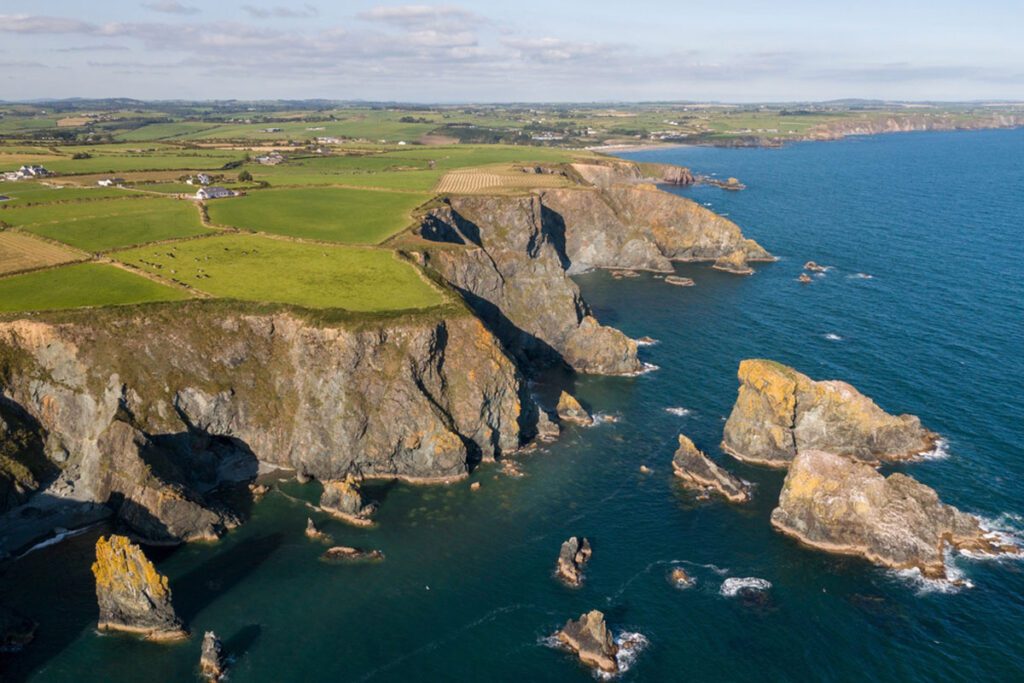
Natural Beauty and Ecological Significance of the Copper Coast
The Copper Coast is renowned not only for its geological and industrial history but also for its stunning natural beauty and ecological richness. Stretching along Ireland’s southeastern coastline, this UNESCO Global Geopark encompasses a variety of habitats and landscapes that support a diverse range of flora and fauna. The area’s natural charm and ecological importance make it a vital destination for nature enthusiasts and conservationists alike.
Diverse Landscapes and Scenic Wonders
The Copper Coast features a range of landscapes that contribute to its breathtaking scenery. From rugged cliffs and hidden coves to sandy beaches and rolling hills, the area offers a visual feast for visitors. Dramatic sea stacks, such as those found near Dunhill and Stradbally, rise majestically from the Atlantic Ocean, sculpted over millennia by wind and wave action. The cliffs and rock formations along the coast provide panoramic views of the sea and surrounding countryside, making the Copper Coast a prime location for coastal walks and outdoor exploration.
Coastal and Marine Ecosystems
The coastal and marine ecosystems of the Copper Coast are integral to its ecological significance. The rocky shorelines and intertidal zones support a variety of marine life, including seaweeds, mollusks, and crustaceans. Tide pools, which are rich in biodiversity, offer a glimpse into the complex interactions between different marine species. Seabirds, such as gulls, cormorants, and razorbills, can be spotted along the cliffs and coastal areas, adding to the region’s vibrant wildlife.
Rich Flora and Fauna
The Copper Coast’s inland areas are home to diverse habitats, including heathland, grassland, and woodlands. These habitats support a variety of plant species, such as heathers, ferns, and wildflowers. The region is also known for its butterfly and bird species, including the rare Marsh Fritillary butterfly and the colorful Kingfisher. The varied habitats provide essential resources for wildlife, making the Copper Coast an important area for conservation and ecological study.
Conservation Efforts
Protecting the natural beauty and ecological health of the Copper Coast is a key focus of the Geopark’s management. Conservation efforts are in place to preserve the area’s unique habitats and wildlife, as well as to promote sustainable tourism practices. The Geopark works to balance the needs of visitors with the preservation of natural resources, ensuring that future generations can enjoy the beauty and ecological richness of the Copper Coast.
Educational and Interpretive Initiatives
To enhance public understanding of the Copper Coast’s natural environment, the Geopark offers educational programs and interpretive materials. Guided nature walks, interactive exhibits, and informational panels provide visitors with insights into the region’s ecosystems and conservation efforts. These initiatives help foster a greater appreciation for the natural world and encourage responsible behavior among visitors.
A Sanctuary for Nature Lovers
The Copper Coast’s combination of stunning landscapes, rich biodiversity, and ongoing conservation efforts makes it a sanctuary for nature lovers and outdoor enthusiasts. Whether exploring the rugged coastline, observing marine life, or enjoying the tranquil beauty of inland habitats, visitors to the Geopark can experience the full range of natural wonders that make this area truly special.
Cultural and Historical Significance of the Copper Coast
The Copper Coast Geopark is not only a geological and ecological treasure but also a region rich in cultural and historical significance. The interplay between its natural landscape and human history has shaped the local communities and traditions, creating a unique cultural heritage that adds depth to the Geopark’s appeal.
The Influence of Mining on Local Culture
The copper mining era of the 19th and early 20th centuries had a profound impact on the Copper Coast, shaping both its physical landscape and its cultural fabric. The influx of miners and their families led to the development of new communities and the establishment of infrastructure, including homes, schools, and places of worship. The mining towns of Bunmahon, Knockmahon, and Stradbally became vibrant centers of activity, with a strong sense of community and shared purpose.
Mining traditions and folklore are an integral part of the local culture, reflected in stories, songs, and festivals that celebrate the region’s industrial heritage. Local museums and historical societies preserve and present these traditions, offering visitors a glimpse into the lives of the miners and the impact of the industry on the community.
Historical Sites and Landmarks
The Copper Coast is dotted with historical sites that tell the story of its rich past. The remains of old mines, such as the Bunmahon Mine, offer a tangible connection to the region’s industrial history. These sites, including old mine shafts, engine houses, and processing facilities, provide a glimpse into the technological innovations and daily life of the mining era.
In addition to mining heritage, the Copper Coast is home to various historical landmarks, such as ancient churches, traditional cottages, and picturesque harbors. These sites reflect the architectural styles and cultural influences that have shaped the region over the centuries.
Local Traditions and Festivals
The cultural heritage of the Copper Coast is celebrated through various local traditions and festivals. Events such as the Copper Coast Geopark Festival highlight the region’s unique blend of natural beauty and historical significance. These festivals often feature music, dance, storytelling, and craft exhibits that celebrate the local culture and heritage.
Traditional crafts and skills, such as weaving, pottery, and blacksmithing, are also part of the Copper Coast’s cultural landscape. Artisans and craftspeople continue to practice these traditional techniques, keeping the region’s heritage alive and offering visitors the chance to experience local craftsmanship.
Community Engagement and Conservation
Community involvement is crucial in preserving and promoting the cultural and historical heritage of the Copper Coast. Local residents and organizations play an active role in maintaining historical sites, organizing events, and supporting conservation efforts. The Geopark’s educational programs and outreach initiatives help engage the community in preserving their cultural heritage while promoting sustainable tourism practices.
The Copper Coast’s Legacy
The cultural and historical significance of the Copper Coast adds a rich layer of meaning to its natural and geological wonders. The interplay between its industrial past, historical landmarks, and local traditions creates a multifaceted heritage that enhances the visitor experience. As a UNESCO Global Geopark, the Copper Coast not only protects its geological and ecological treasures but also celebrates and preserves the cultural legacy that has shaped this unique region.
The Copper Coast offers a fascinating journey through Ireland’s past, blending natural beauty with historical and cultural richness. By exploring its landscapes, learning about its mining history, and engaging with local traditions, visitors gain a deeper appreciation for the diverse and vibrant heritage of this remarkable Geopark.
Natural Wonders
- The Giant’s Causeway – A UNESCO World Heritage Site featuring unique hexagonal basalt columns.
- Carrick-a-Rede Rope Bridge – A thrilling rope bridge linking the mainland to a small island.
- Cushendun Caves – Stunning caves featured in Game of Thrones.
- Glens of Antrim – A series of nine beautiful glens offering breathtaking scenery and walking trails.
- Fair Head – A dramatic cliff with incredible views, popular for hiking and rock climbing.
Castles and Historic Sites
- Dunluce Castle – A medieval castle perched on a dramatic cliff overlooking the sea.
- Carrickfergus Castle – A well-preserved Norman castle dating back to the 12th century.
- Shane’s Castle – A historic estate with a ruined castle and stunning grounds.
Coastal Attractions
- The Dark Hedges – A hauntingly beautiful avenue of beech trees featured in Game of Thrones.
- Ballycastle Beach – A scenic spot for relaxation and views of Rathlin Island.
- White Park Bay – A picturesque beach with stunning coastal views.
Islands and Marine Attractions
- Rathlin Island – Known for its wildlife, seabird colonies, and the Rathlin West Light Seabird Centre.
- Ballintoy Harbour – A charming harbor and filming location for Game of Thrones.
Museums and Cultural Sites
- Ulster Folk and Transport Museum – Showcasing traditional Irish heritage and transportation history.
- Belfast Lough – Known for maritime heritage, including the Titanic Quarter.
Scenic Drives and Routes
- Causeway Coastal Route – A stunning drive featuring some of Northern Ireland’s most iconic attractions.
- Slemish Mountain – Said to be the first home of Saint Patrick in Ireland, popular for hiking.
Unique Experiences
- Old Bushmills Distillery – One of the oldest whiskey distilleries in the world, offering tours and tastings.
- Glenarm Castle and Gardens – A stunning estate with historic gardens and seasonal events.
These attractions make County Antrim a must-visit destination for nature lovers, history buffs, and adventure seekers alike.
Helpful Resources


